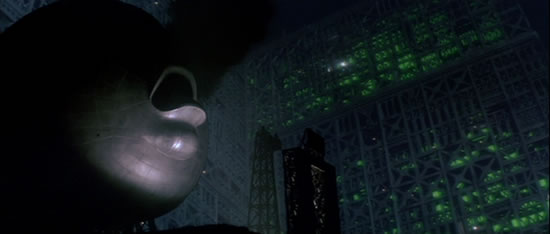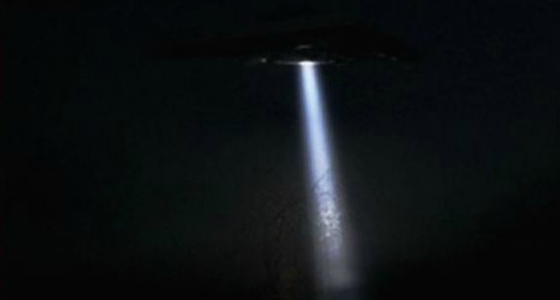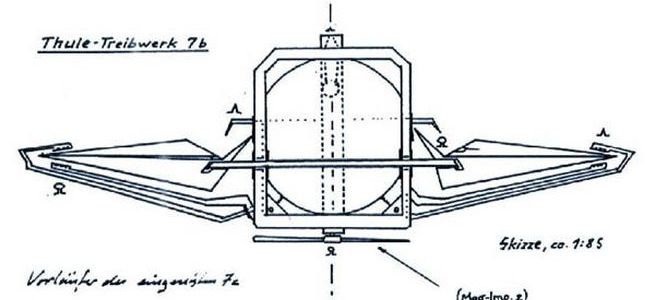In the past weeks, an opinion column and an interview both appeared on-line calling for UFOs to be taken more seriously, a sentiment I surely share, just not in the same way the authors likely intend or their readers understand.
Tyler Cowen, a Bloomberg opinion columnist and professor of economics at George Mason University, urges his readers to “Take Those UFO Sightings More Seriously”. The UFOs Cowen has in mind specifically are those in “leaked…videos taken by U.S. navy pilots” recently released by the U.S. Department of Defense. Cowen’s column is not so much a proposal for why or how to take UFO reports seriously as much as a reflection on “the contrast between those who see this as an important question and those who think the whole thing will turn out to be an error or some kind of optical illusion.”
For Cowen, those acquaintances of his game to speculate on the matter are of three kinds: readers of science-fiction, those “used to thinking probabilistically”, and those not put off by ufomaniacs, with their “cultish devotion to the topic.” Cowen’s second and third types are merely rational. As he puts it, that a claim “‘is almost certainly nonsense,’ [is] still a case for further investigation, as long as the word ‘almost’ remains”; by the same token, logically, no topic is invalid on grounds of guilt by association alone.
Cowen’s own interest in UFOs stems from time he spent among Nahuatl-speaking villages in Mexico populated by the descendants of the Aztec empire, which famously “met its doom” at the hands of the technologically-superior conquistadors, from which Cowen would draw an historical lesson (at least, that “all of a sudden you are not in charge, and that the future will be permanently different from the past, [and] … that there is more to the world than what is right before your eyes”). With this confession, and that, as a young teenager his favorite authors were Isaac Asimov and Arthur C. Clarke, the cat is out of the bag.
On the one hand, most charitably, we might take Cowen to be arguing for no more than intellectual humility, the admission that our knowledge of nature is limited and that what we have yet to discover might well lead to radical change. On the other, his example of the fateful encounter between Europeans and Turtle Islanders in this context might well be taken to imply his views are skewed (if not skewered) by the very same anthropocentrism that possesses those with a cultish devotion to the topic of UFOs. For the cognoscenti, the comparison between the arrival of Europeans on the shores of Turtle Island and that of no less “technologically-superior” extraterrestrials on earth is a cliché. More seriously, it uncritically (and unimaginatively) projects patterns of human ingenuity, behaviour, and history on extraterrestrial life, as if the tenuously contingent, nearly aleatoric vector of human cultural history (let alone “technology”) were somehow a transcendent, eternal Platonic Form shaping the destiny of all life in the universe. That is, the comparison assumes that technology is somehow natural to intelligent life and that it develops along fairly universal lines, such that one culture can unproblematically be said to be more or less technologically advanced than another. The same kind of thinking is expressed by the Raëlians, whose extraterrestrial Elohim are 25,000 years in advance of us.
Even more suggestive is Cowen’s invocation of science fiction. Readers, if not fans, of the genre are amenable to imagining UFOs are instances of advanced technology, terrestrial or otherwise, not only because such projections are the very stuff of much of the genre, but also (and more interestingly) because most speculations about the nature of UFOs are themselves a kind of spontaneous science-fiction, as proponents of the Psychosocial Hypothesis (perhaps most notably Martin Kottmeyer) have long maintained. For those who pursue this line of thought, science fiction provides the manifest content of UFO sightings and close encounter experiences, which, in turn, provides more material for science fiction. In a word, in this regard, the UFO is hyperreal.
Cowen is not alone in wanting UFOs to be taken seriously nor in standing on the same ideological ground that roots his contention. Alexander Wendt, a professor of international relations at Ohio State University, already well-known for his co-authored academic paper “Sovereignty and the UFO” and his recent TEDx talk, “Wanted: A Science of UFOs”, in an interview with Vox voices ideas very much in harmony both with those who call for serious research into UFOs and those with their cultish devotion to the topic.
With regard to those recently-released U.S. Navy videos that prompt Cowen’s thoughts, Wendt’s probabilistic thinking is that odds are “51 to 49 in favor” of the videos’ picturing extraterrestrial craft; indeed, Wendt goes so far as to claim that “the Occam’s razor explanation is ETs.” Nor is Wendt shy about speculating about the visitors’ possible intentions (though it is surely uncertain just how serious to take his words, here): “They could just be intergalactic tourists. Maybe they’re looking for certain minerals. It could just be scientific curiosity.” A number of times in the interview, Wendt proposes that the visitors have been on earth a long time, as “there are medieval woodcuts that seem to show UFOs. There are UFO stories in the Bible, apparently, or at least stories that are interpreted that way.” Given they have been visible throughout human history, the question naturally arises as to why the aliens have neither kept their presence secret nor have made open contact: Wendt guesses “they have had a lot of experience with this in the past with civilizations at our stage.” The interview understandably explores the imaginable consequences of open contact, which, for Wendt, would be “the most important event in human history,” and culturally catastrophic, a scenario that, again, as with Cowen (and Stephen Hawking, who is remarked), is compared to the encounter of Europeans and Turtle Islanders, in Wendt’s case, the meeting of Montezuma and Cortes. Such a meeting with our extraterrestrial visitors would be so destabilizing, because, for Wendt, “there’s a hubris in the scientific community, a belief that human beings are the most intelligent species on this planet, and it’s very hard to come to grips with the idea that if there are aliens here, they’re obviously much smarter than we are.”
Clearly, Wendt’s speculations are governed by the same set of assumptions about life, intelligence, and technology as Cowen’s and the ufomaniac’s. Wendt seems to take for granted that intelligence is unproblematically measurable and comparable, especially as it is expressed in technological terms (the aliens are “obviously much smarter than we are”); that technology, likewise, is measurable on a universally-applicable, sliding scale (the aliens have encountered “civilizations at our stage”); that even the intentions and values of intelligent, technological species are akin to our own (the aliens are tourists, or prospectors, or scientists). These hardly unproblematic assumptions are all the more ironic given that, for Wendt, the institution of the state is markedly “anthropocentric” and the scientific community is guilty of the hubris of believing “human beings are the most intelligent species on this planet.”
Wendt’s assumptions about technology and culture are strikingly ideological, projecting not only the narcissistic history of one culture on earth (the one that tells the story of the so-called “developed world”) onto that of all imaginable others, but going so far as to imagine prospecting and tourism as no less possibly “natural” to intelligent life. And his assumptions about intelligence are no less blinkered than those of the scientists he criticizes, for it is precisely some of those self-same scientists, whose research into animal and even plant consciousness, cognition, and intelligence, who have shattered the concept and scale of “intelligence” that allows Wendt to so casually utter judgements about human and alien intelligence. Indeed, in light of the Covid-19 pandemic and its relation to environmental degradation, arguably a more important event in human history then encountering some version of our First World selves (however much more “advanced”) would be the dethroning and decentering of human intelligence, ingenuity, and interests and the advent of a more sane, just, and sustainable biocentric culture and civilization, one capable of recognizing, yes, the intelligence (let alone intrinsic value) of the myriad of “alien”, i.e. nonhuman, forms of life with which we share this planet.
This critique should not be mistaken for a dismissal. Wendt is to be applauded at least for, as he says, having a plan, the project for “a ground-based network of surveillance stations” under the aegis of his nonprofit UFODATA. Indeed, almost since the advent of the modern era of the phenomenon, motivated by both concerns over national security and scientific curiosity, the reality and nature of the UFO has been subject to study with tools and methods both forensic and natural scientific. I would think any projected research along these lines would begin with a review of the available literature to discover just what had been attempted, what had been discovered (if anything), how or why not. In this regard, it strikes me as curious how efforts such as UFODATA never seem to remark these previous attempts, e.g., those of Harvey D. Rutledge’s Project Identification carried out in the early 1970s or the ongoing research into the Hessdalen Lights. In any event, such a “scientific ufology” is likely to remain with us as long as the enigma of the phenomenon and is hardly to be dismissed outright.
Of course, research of the kind Wendt proposes is hardly the only way to take UFOs seriously. The UFO undoubtedly holds a cultural place, one much more amenable to investigation. However, some more recent, humanistic approaches to the UFO have not proven as serious as they could or should be, either, given their authors’ scholarly background or the prestigious academic presses that issued their work. David J. Halperin’s Intimate Alien came out with Stanford University Press this year (2020) and D. W. Pasulka’s American Cosmic appeared with Oxford University Press the year before. Both Halperin and Pasulka are religious studies scholars, Halperin retired from the University of North Carolina, Chapel Hill and Pasulka at the University of North Carolina, Wilmington. Both works (pretty much) bracket the question of the reality and nature of the UFO and their putative pilots, focussing more on the religious significance of the phenomenon and the stories about it. Both works absolutely warrant a more sustained and scrupulous reading than I venture here, but their curious lack of scholarly heft in essential respects can be sketched out briefly along with some speculations as to the editorial and cultural pressures I imagine that are to blame.
Halperin’s Intimate Alien (“The Hidden Story of the UFO”) takes up the countless stories about UFOs explicitly as a mythology, not in the sense of a system of outmoded, unfounded false beliefs, but in the sense of Carl Jung’s “modern myth of things seen in the sky”. UFOs and the reports of and rumours about them spring ultimately from the Collective Unconscious, the wellspring of all dream, myth, and art, and express something profoundly meaningful about the human condition. Indeed, Jung’s analytic psychology, with its ideas of the Collective Unconscious and Archetypes, is the theoretical foundation of Halperin’s book, yet nowhere does Halperin make anything more than the most passing, casual explanation of Jung’s theories or ideas nor a single reflection on let alone defense of their veracity.
American Cosmic, though more far-ranging in both its subject matter and field of scholarly reference, goes awry from the get-go. In the book’s preface, Pasulka brings to bear Martin Heidegger’s reflections on technology. Her presentation of the German philosopher’s admittedly challenging (if not “impenetrable”) views on the topic are so truncated they seem to me to approach the perverse. She writes: “Heidegger suggested that the human relationship with technology is religiouslike, that it is possible for us to have a noninstrumental relationship with technology and engage fully with what it really is: a saving power” (xii). I am uncertain what textual warrant she might have for her first claim (that Heidegger characterizes “the human relationship to technology as religiouslike”, an idea fundamental to her book’s approach to the matter). It is surely the case, however, in my understanding, that Heidegger maintains “it is possible for us to have a noninstrumental relationship with technology”, such a relationship being the condition for thinking to grasp the essence of technology itself. However, it’s hard to read the claim that Heidegger saw technology as “a saving power” as anything other than only half the story, if that. Technology and the manner in which it frames all beings as “standing reserve” (very roughly, as raw material) is precisely the gravest danger to human being and its relation to the question of the meaning of Being that technology utterly obscures. Our technological epoch is the very nadir of Being, wherein technology renders human beings unaware of both the very questionableness of Being (“What does ‘being’ mean?” the question that motivated Plato and Aristotle and whose answers to that question governed philosophy and ultimately science and technology down to the present day) and grasps every being, even human beings, as a means to an end. The perception of this grave danger posed by the way technology alienates human beings from Being, themselves, other beings, and even the essence of technology itself, a threat from which “only a god can save us”, is what moves Heidegger to recall the poetic word of Hölderlin: “But where danger is, grows / the saving power also.” That is, it’s only once we have gained access to the essence of technology as framing beings as standing reserve that that “saving power” can come to light. The reason I lay so much emphasis on this single sentence from the book’s preface is because the relation between technology and the sacred, how technology becomes an object revered and adored (if not fetishized) and the consequences of this relation for the significance of the UFO, is the red thread that runs through the argument of the entire book, arguably suturing its disparate chapters together. Thus, in both Intimate Alien and American Cosmic, essential, foundational concepts are presented in passing, as if self-evident, needing no explanation, analysis, reflection, or defense, which is neither serious in a scholarly sense nor ultimately intellectually satisfying.
Of course, it shouldn’t take too much reflection to see that I am demanding too much of these two books, because neither are, in a sense, serious, scholarly works, certainly not in the manner of Jung’s or Heidegger’s. Their style, biographical and conversational in the case of Intimate Alien, narrative and easy-going in that of American Cosmic, mark them as works by academics whose argument and presentation have been debased and polished respectively in equal measure for the sake of broader appeal (read: sales). Especially given that the genre of “UFO books” is a popular, not a specialized, one (in the way that Religious Studies books are), it’s not difficult to imagine the pressures increasingly cash-starved academic presses face (Stanford University Press recently barely avoided being shuttered altogether) to increase revenues, pressures passed on down to editors and their authors. These straits, combined with certain fashions coming to the fore in the 1980s, discernible in the light-hearted styles of literary theorist Terry Eagleton or, closer to home, Jodi Dean in Aliens in America, motivated, at the time, by the sense that academics might and should culture a readership wider than that of their specialized peers, along with a parallel loss of “deep literacy“, combine to shape Halperin’s and Pasulka’s books into what they are.
UFOs, whether as a maddeningly elusive physical phenomenon or a richly-suggestive sociocultural one, call to be taken seriously, more seriously than a for-profit intellectual marketplace in our increasingly semiliterate time allows. Regarded as a cultural phenomenon, as my ideological critiques of Cowen and Wendt suggest and as Pasulka intuits, the UFO is revelatory in its own, weird way, of the gravest problems facing human civilization and the obscured disorientiation at their root, disorentiations and confusions whose names are legion, not to be dispersed without an investment in an ascetic, grave intellectual labour equal to the challenge and even that meagre flicker of insight to be won.
[By curious synchronicity, the day I was finally able to get these thoughts more or less down, Scientific American posted an interview with Leslie Kean, “Should Scientists Take UFOs and Ghosts More Seriously?”. For the interviewer (John Horgan), the only worthwhile concern was whether UFOs are extraterrestrial. “What is the best single piece of evidence that UFOs have an extraterrestrial origin?” he asks. Seriously?]



















